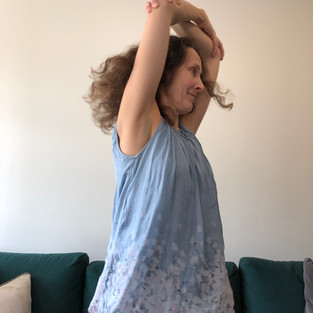Accessing the Healing Power of the Vagus Nerve
- Jacqueline Lawes
- May 5, 2019
- 3 min read
Updated: Feb 14, 2024

The Vagus Nerve
The Vagus Nerve is the longest of the cranial nerves, coming from the back of the head, running through the neck and down into the body. It has two branches, the upper branch which runs through the chest, regulating our heart and lungs, and the lower branch which reaches all the way down into the gut regulating the digestive organs, the bladder, kidneys, and the reproductive organs.
The Vagus nerve is the main nerve of our parasympathetic nervous system and is activated in the stress response of fight, flight, or freeze, when our body mobilises to meet a threat.
Sometimes through shock, trauma or long- term stress, we can get stuck in an activated response or become dysregulated, moving between relaxation and activation; this is sometimes referred to as dysautonomia.
By supporting deep relaxation, you will relax your vagus nerve and support vagal tone; increasing your ability to relax after a stressful event.
The Vagus Nerve Helps Us have meaningful relationships.
The vagus nerve affects our ability to make positive and loving connections with people and in the world around us. If our "vagal break" is on and we are in "rest and digest" mode, our facial muscles relax, our expression changes, the light comes into our eyes and we feel more connected to people and to the world around us.
Accessing the Healing Power of the Vagus Nerve Through the body
The following techniques were developed by Stanley Rosenberg, a bodywork therapist. He took the latest medical understanding of the vagus nerve developed by Stephen Porges, PhD and created techniques to support the vagus nerve and develop vagal tone. These techniques can be done as often as you like. Developing vagal tone should be thought of as a process, a little like developing muscle tone; the more you do the technique the more your body will develop its ability to return to relaxation after a stressful experience.
The Head Lift
This exercise lifts the occiput, helping the alignment of the first two vertebrae of the spine; C1 and C2. The relaxing of these muscles promotes better blood circulation to the brain, the brain stem and the cranial nerves, supporting Vagal tone. As we move the eyes from left to right, the eye muscles directly affect the muscles at the base of the head. By relaxing these muscles, we support the relaxation of the cranial nerves and the vagus nerve.
1. Interlace the fingers, cupping the hands behind your head. Now lift a little to engage with the atlas and axis and lean back into your hands.
2. Look right and wait for a change. This might be a yawn or a sigh or simply a feeling that something has changed.
3. Look left and wait for a change.
Shoulder, Head and Neck pain.
The 11th cranial nerve and the trapezius and SCM muscles.
Mostly our muscular system is controlled by spinal nerves. However the trapezius and the SCM are controlled by the 11th cranial nerve and work closely with the vagal nerve.
They are also connected to our fight, flight, freeze response and to social engagement.
Trapezius Twist and Turn Exercise
1. Fold your arms at waist height and swing (twisting) from side to side 3 times.
N.B as you do this allow your whole body to twist from the waste up, so that you end up looking behind you.
2. Fold your arms at chest height and swing three times from side to side.
3. Fold your arms above your head and swing three times from side to side.














Comments